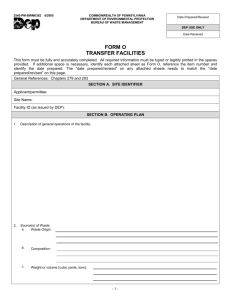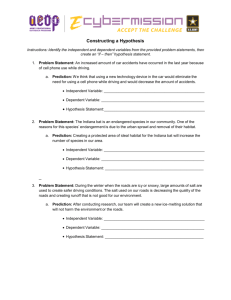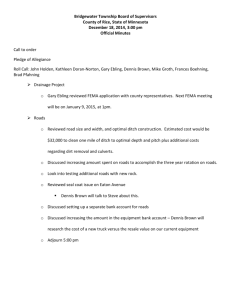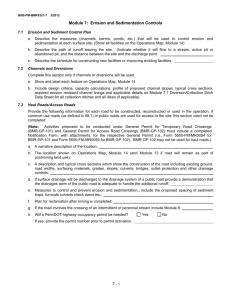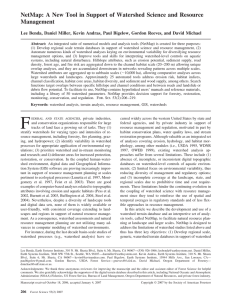NetMap Community Digital Watersheds & Shared Analysis Tools
advertisement
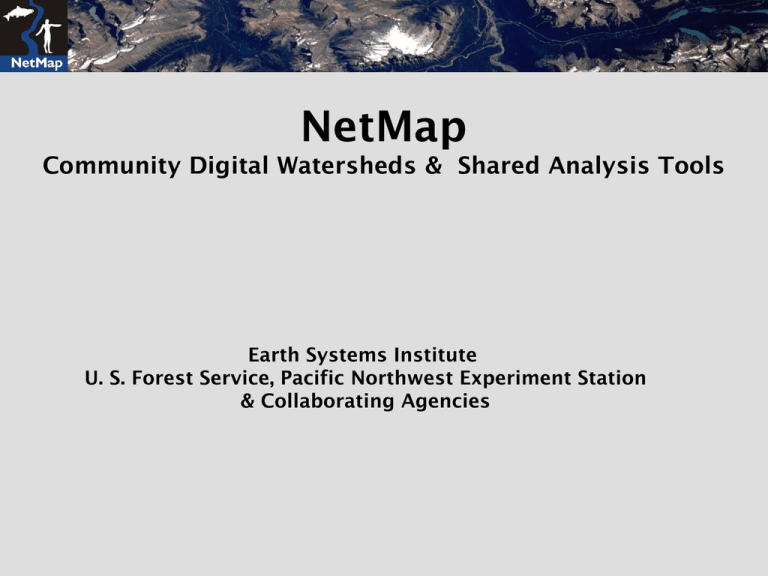
NetMap Community Digital Watersheds & Shared Analysis Tools Earth Systems Institute U. S. Forest Service, Pacific Northwest Experiment Station & Collaborating Agencies The NetMap Project Collaborators: Earth Systems Institute (non profit) USFS, PNW, PSW Research Stations USFS, Region 6 (WA, OR) BLM (OR) EPA (Puget Sound) NOAA- Fisheries Private Industry NGOs NetMap’s Components 1) Community digital watersheds within a common data structure 2) Shared analysis tools (ArcGIS) utilizing digital watersheds for decision support 3) Community (stakeholder) supported design, development and maintenance Community Concept State Agencies Universities Web based Digital Watersheds Analysis Tools (common structure) NGOs Consultants Collaboration Communicat ion Federal Agencies Private Industry In: EOS (AGU) 2009 ‘Future of Applied Watershed Science at Regional Scales’ (download at www.netmaptools.org) Why a community based system? NWFP Increasing spatial scale of land use planning and overlapping agency jurisdictions Similar questions, data, and analysis tool needs Flat or declining budgets and reduced staff (community = powerful form of leveraging) In the last decade: High resolution digital data Fast computers w/vast storage Advanced GIS Watershed process models Web Shared Tool Development (~ 100 tools) Aquatic habitat indices Habitat intrinsic potential models Core areas Channel classification Floodplains Connectivity Watershed Processes Sediment Wood Thermal Vegetation Forest conditions Fire risk Burn severity Roads Drainage diversion Surface erosion Stability Floodplains etc. Ground-Up Tool Design Automated GIS (search, sort & rank, query), Google Earth, Technical Help Shared Tool Development (~ 100 tools) Aquatic habitat indices Habitat intrinsic potential models Core areas Channel classification Floodplains EPA Connectivity Watershed Processes Sediment Wood USFS Thermal Vegetation Forest conditions Fire risk Burn severity Roads Drainage diversion NOAA Surface erosion Stability Floodplains etc. Ground-Up Tool Design Automated GIS (search, sort & rank, query), Google Earth, Technical Help Wild Salmon Center Community Digital Watersheds (within a common data structure) 77 million acres, 120,000 mi2 among federal/state collaborators Completed In process Advantages: Supports development of shared analysis tools Increases consistency within and across agencies Encourages increased communication & collaboration Analyzes dissimilar watershed in similar ways Decision Support – Multiple Applications Forestry – Timber harvest Roads Conservation Restoration Pre- fire planning Aquatic Habitats Climate Change Post- fire (BAER) planning Climate change Approach: Focused approach on specific impacts Temp Post Fire Planning (BAER) Pre Fire Management Road Analysis (minimum roads) Climate change Timber harvest (riparian mgmt, insects) Watershed Restoration ESA/CWA Or integrate with existing management programs Climate change and road concerns (impact to fisheries and transportation); an example analysis using NetMap Step 1: Examine downscaled Global Climate predictions Increased winter flooding likely Step 2: Examine roads within GCM predictions Areas of potential concern Roads Ratio of snowmelt runoff to total runoff, in percent (2080 - historical) 13 - 21 21 - 26 26 - 31 31 - 36 36 - 43 Step 3: Define vulnerable habitats (A) (B) Step 4: Map Road Density (B) Road density (km/km2) stream segment scale – finer scale (A) Road density (km/km2) sub basin scale 0-2 2-4 4-7 7-10 10-117 Drainage wings Step 5: Predict road drainage diversion/erosion potential Road pixel (A) Road drainage diversion (m) 0-95 95-250 250-580 580-1400 1500-4200 (B) Road surface erosion (WEPP) Low High (C) Road erosion to streams Step 6: Identify roads in floodplains Areas of potential concern Floodplain Roads in Floodplains Roads Step 7: Evaluate road instability potential (A) Failure/gully potential Low High (B) Roads Road instability potential Low High Potential concern Step 8: Roads and debris flows (A) (B) Roads Roads intersecting higher debris flow risk Debris flow risk Low High Step 9: Putting the pieces together NetMap’s automated search and overlap tools Debris flow potential (>0.03) & Bull trout habitat (>0.5) Road density (> 5 km/km2) & Bull trout habitat (>0.5) Target areas of potential interest & concern Target field surveys, maintenance Wenatchee-Okanogan National Forest – Minimum Roads Analysis (they conducted the foregoing analysis – see poster) Pre- and post fire planning (Shasta-Trinity National Forest) Step 1: fuels Step 5 Overlay high fire intensity w/ high erosion risk Step 2: fire intensity (inc. climate change) Step 4: Habitat Step 3: Erosion Step 5 Identify overlaps among high fire risk, high erosion potential & high habitat potential Prioritize treatments Conclusions NetMap is a community system of shared digital watersheds & analysis tools Climate change concerns can be integrated within existing management programs (roads, fire, riparian etc.) ‘Landscape vulnerability’ assessments can be done efficiently and focus on issues pertaining to roads, fire, insects, aquatic species etc. See NetMap demo for hands on For additional information, see Posters (w/handouts) NetMap Project seeks additional collaborators; for additional information go to http://www.netmaptools.org/ Or contact Dr. Lee Benda at Earth Systems Institute (leebenda@earthsystems.net)


